Total lunar eclipse in the early morning of September 28
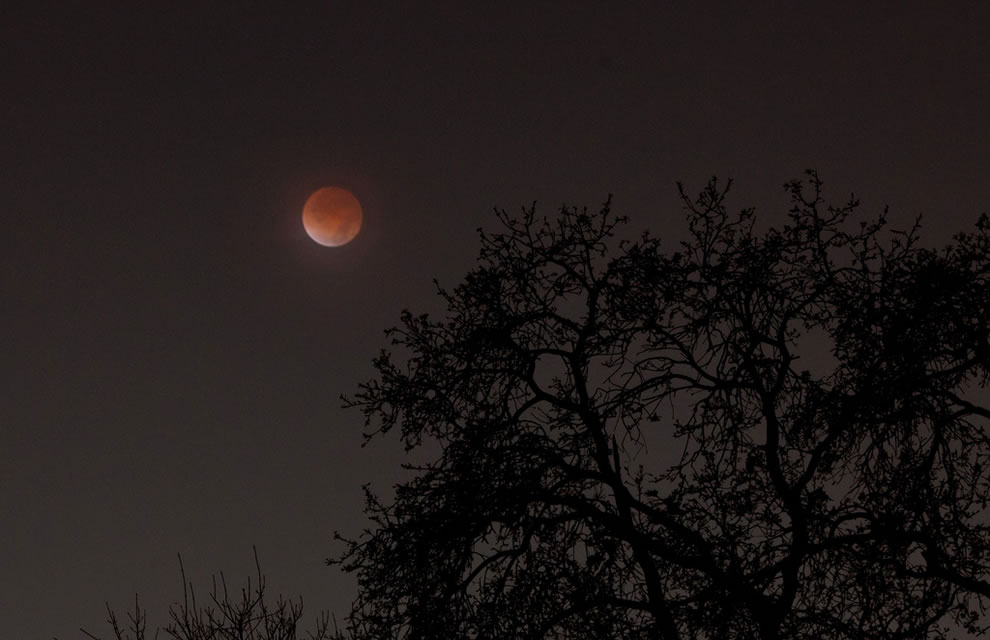
Today, the Moon is in the phase of the first quarter and it remains to make only a quarter of the orbit before meeting the cone of the earth’s shadow . A private eclipse will begin on September 28 at 4:07:11 Moscow time, and the full phase at 5:11:10 . The maximum is expected at 5:47:07 in an already bright sky shortly before dawn. Unfortunately, in Moscow, the moment of coming out of the shadow is not visible - half an hour after the maximum, the moon will disappear behind the horizon and the sun will rise.
Monday's early morning is not the most convenient time, and the visibility conditions of the full phase are far from ideal (the height of the moon is less than 10 degrees). Nevertheless, I still advise you to look at this phenomenon for the following reasons:
- This eclipse will coincide with the super moon and the moon will be slightly larger than usual, and proximity to the horizon will further enhance the effect (see moon illusion ).
- The next total lunar eclipse visible in the European part of Russia will occur only on July 27, 2018 .
Note. The indicated times are valid for any observer location adjusted for the time zone. Only the position of the moon in the sky will differ. Unfortunately, for many of our compatriots (for example, for Siberians), an eclipse will occur after the moon sets. The visibility conditions described here are true for Muscovites and residents of neighboring regions.
Choosing a place to observe
If your window faces west or southwest, and houses and trees do not cover the horizon, then you are lucky and you can watch the eclipse without leaving your house. Otherwise, you will have to find a suitable observation site. The sky in a westerly direction should be visible to a height of at least 5 degrees, otherwise you will not see the full phase. For the rest of the week remaining before the eclipse, the Sun will be in the region of the sky we need at approximately 17:20 (± 5 min). Use this fact to check whether the full phase will be visible from the place you have chosen - it should be lit by the sun at 17:20.
Photography
If you have a camera with a telephoto lens, take it with you. When shooting private phases, you can do without a tripod, but for the full phase it is better to fix the camera - the lunar disk will darken very much and require more exposure.
Penumbral phase
The penumbral phase of the eclipse will begin at 3:11:47 , but you will immediately see some changes with the naked eye. But if you take a picture of the moon in about half an hour, you will see in the photo that the full lunar disk is lit unevenly - the left edge is darker. This is because for the observer on the Moon at this moment the Sun is already partially covered by the Earth, and the degree of closure varies for different points on the surface. By the way, a picture of the full moon before the start of the penumbra phase will be interesting in that it will be the maximum full moon that can be photographed from the Earth (usually on the full moon one edge of the moon is slightly crinkled, see if you ever saw the full moon ).
Shortly before the start of a private eclipse, a slight darkening of the upper left edge of the lunar disk will already be visible to the eye.

Then the moon suddenly loses its perfectly round shape - the private phase begins.
Private phase
The position of the moon among the stars of the constellation Pisces at the moment of touching the shadow:
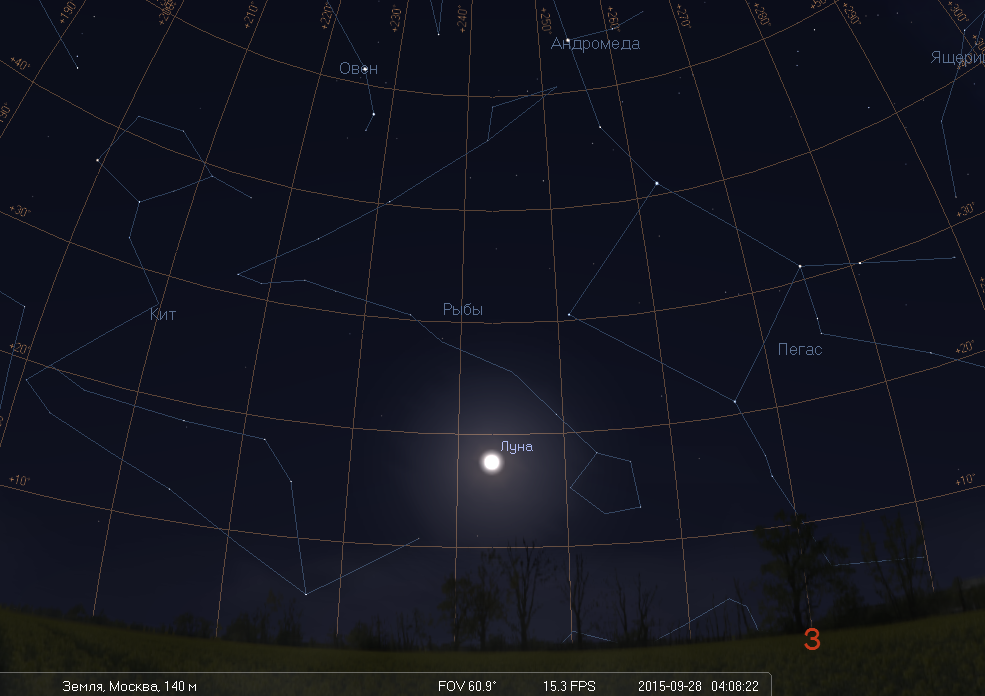
At about 4:45 the shadow of the Earth will cover half of the lunar disk. The moon by that time will go down to 13º above the horizon.
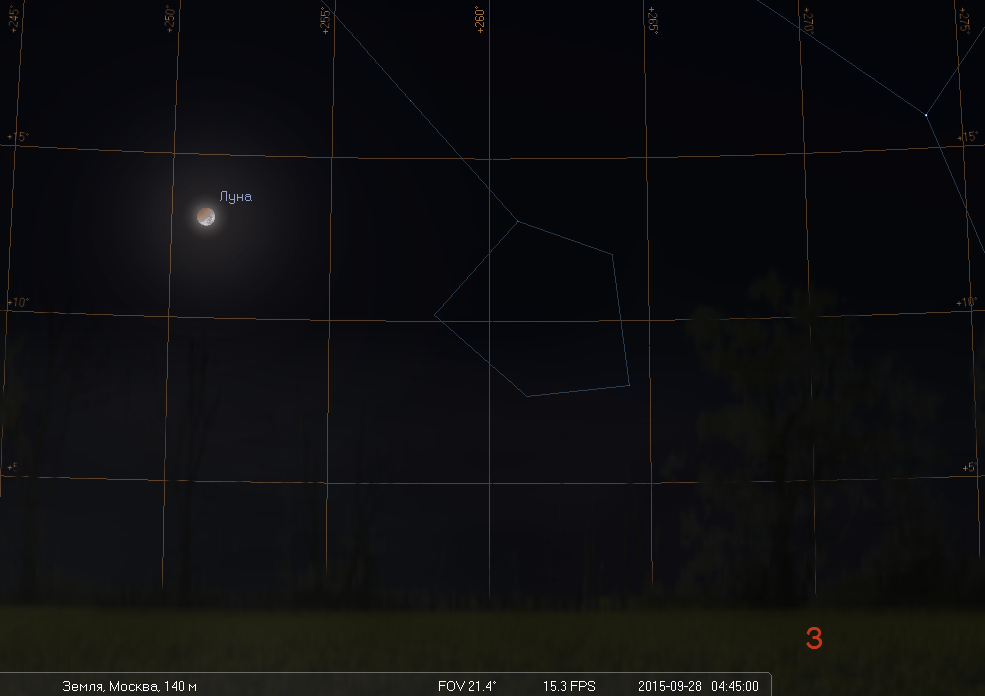
During the private phase, the brightness of the shaded and light parts of the disc are very different. The eye sees both parts well, but the camera does not have enough dynamic range over the entire moon. You can try to take an HDR photo:
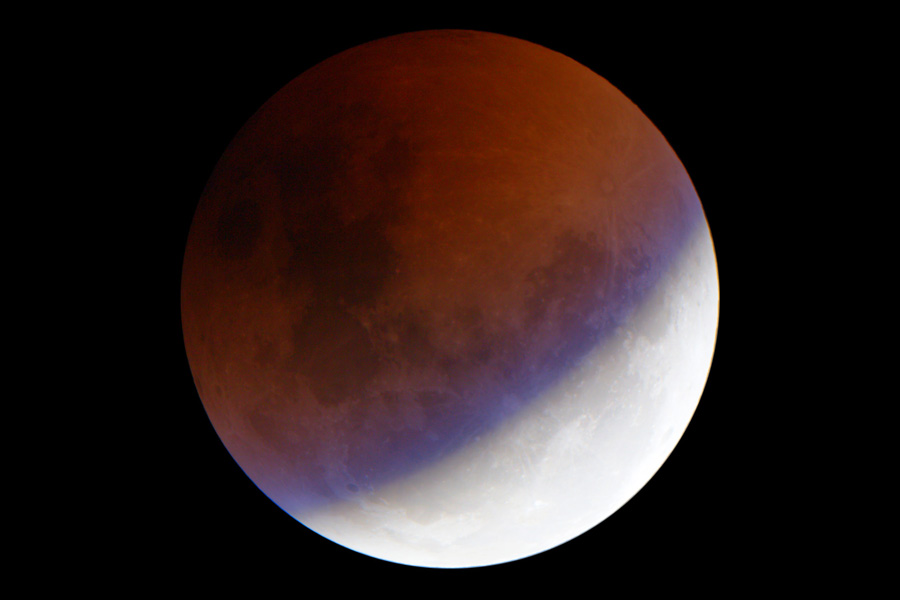
Full phase
Beginning of the full phase, height slightly less than 10º:
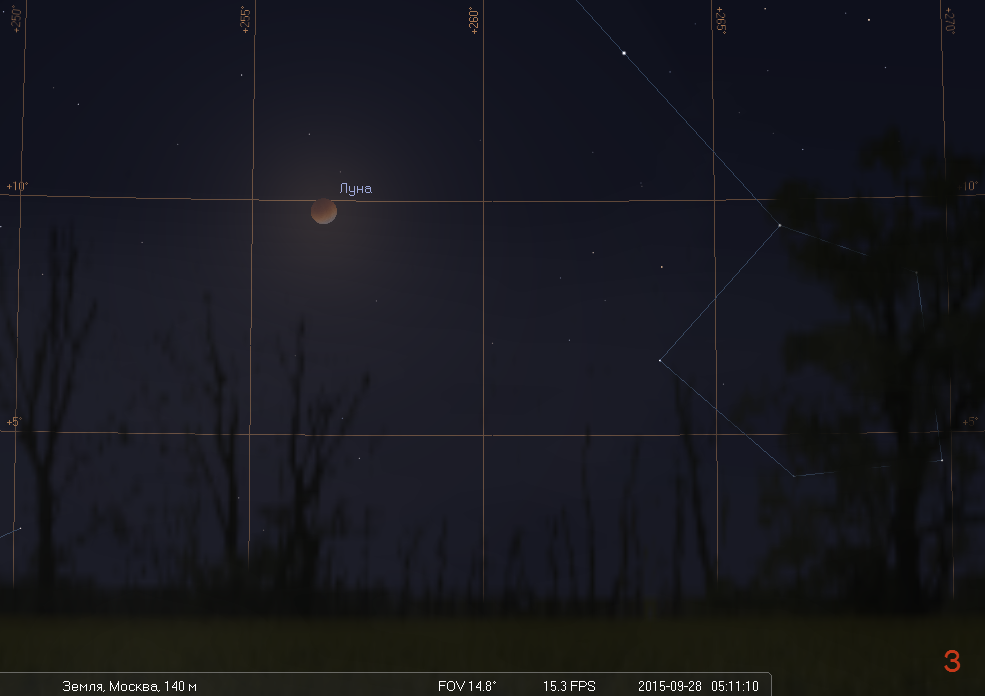
Maximum. It is already dawning, the Sun is only 5º below the horizon, and the Moon is 5º higher - at the time of the lunar eclipse they are at diametrically opposite points in the celestial sphere (adjusted for refraction and the final dimensions of the shadow).
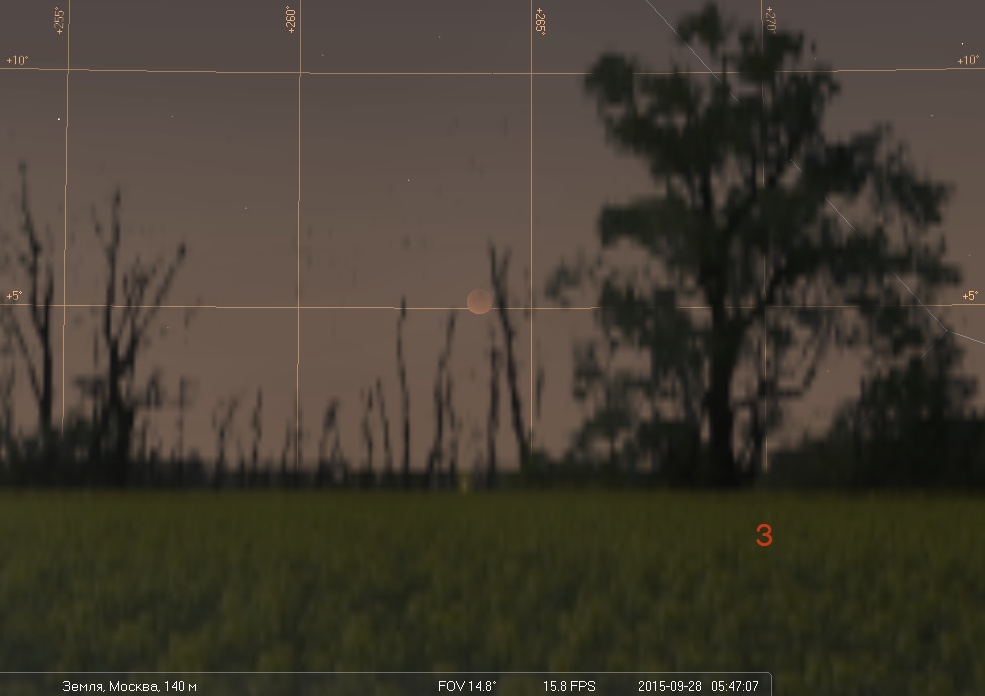
The moon’s north pole will appear darker as it passes closer to the center of the earth’s shadow.
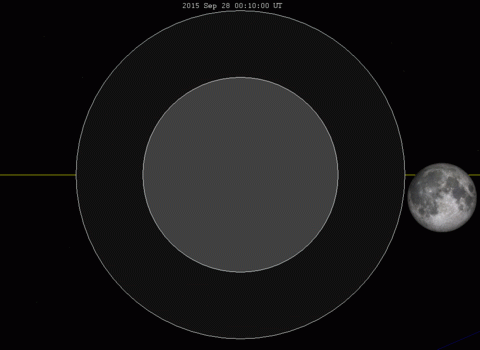
Why is the moon blushing
The red color of the moon during the full phase is due to the same reasons why we see the red dawn after sunset (see Diffuse radiation of the sky ).
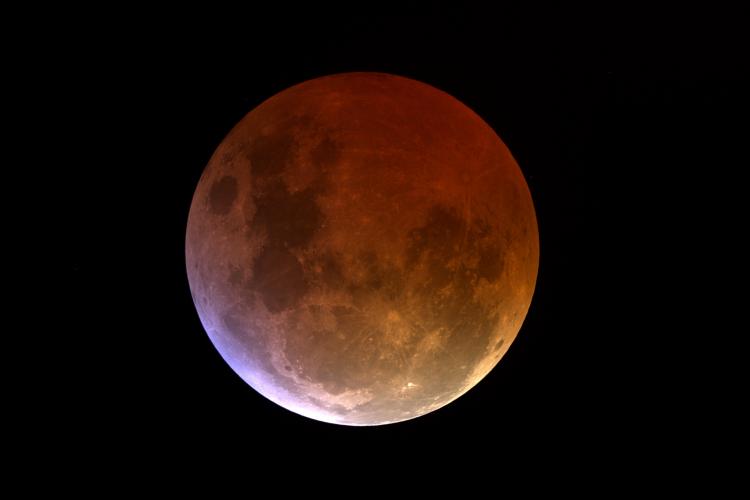
The observer on the moon, as it were, sees the dawn simultaneously along the entire circumference of the earth's disk.

This model, taken from a Wikipedia article, is very crude - the glow of the cities on the night side is exaggerated, and the dawn ring should not be so evenly colored. The only real image of the Earth from the lunar surface during a lunar eclipse was made by Surveyor 3 in 1967: The

uneven width of the ring is related to the difference in weather conditions and atmospheric conditions.
This picture was taken by the Apollo 12 team , but not from the surface, but on the way home:

A Japanese probeKaguya even made a video of Earth rising above the moon’s north pole during an eclipse on February 9, 2009 . The video was not shot from the surface, but from the polar near-moon orbit.
This eclipse was visible from Earth as a penumbra, the Moon then almost touched the shadow with its northern side. Kaguya was in polar orbit and nevertheless passed through a shadow flying over the area of the moon’s north pole.
It is interesting that a week ago (i.e., half a revolution before the upcoming eclipse), a partial solar eclipse was visible in southern Africa and part of Antarctica. Spacecraft SDO (Solar Dynamics Observatory, Observatory of Solar Dynamics) was fortunate enough to be near a straight line passing immediately through three celestial bodies - the Sun, Moon and Earth (in decreasing order of distance from the spacecraft). The result is such a rare shot of a double solar eclipse shot in the far ultraviolet:

The moon has no atmosphere and the edge of its disk (pictured left) is sharp. The Earth’s atmosphere leads to blurring of the edge of the Earth’s disk (a dark arc at the top).
Eclipses of the Sun by other planets having an atmosphere
A photograph made from the shadow of Pluto by the apparatus. New horizons :

In Cassini's photo album there is such a magnificent shot:

The point to the left of the rings is Earth.

In Cassini's photo album there is such a magnificent shot:

The point to the left of the rings is Earth.
Short-term lunar phenomena
If you have a telescope, try to examine the lunar surface covered with shadow with maximum magnification - there is a rare chance to detect the so-called short - term lunar phenomena . During a lunar eclipse, the temperature of the red-hot daylight of the moon drops very sharply. Due to mechanical stresses in the rocks, an electric field can occur that causes ionization and glow. The nature of these phenomena and the fact of their existence are still the subject of debate. There is still no reliable confirmation of the same event by several observers.
Update: What else will be visible in the sky during a lunar eclipse?
Only registered users can participate in the survey. Please come in.
Will you watch the eclipse?
- 28.6% Here's another, it's better to sleep off before the work week. 117
- 12% Lie down later and look. 49
- 29.6% Get up early and look. 121
- 29.6% I will wake up, take a look, and continue to sleep. 121
Did you know about the upcoming eclipse before reading this article?
- 61.2% None. 330
- 24.6% I heard something, but did not know the exact time and conditions of visibility. 133
- 14.1% Already knew when and where to observe. 76
